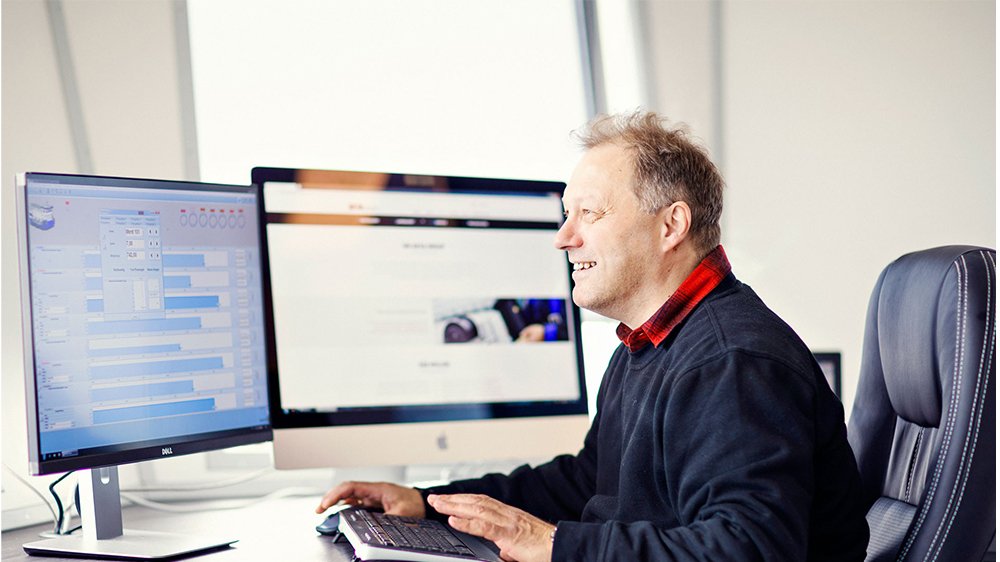
A fish farming locality is not necessarily a place where high-speed internet connection is available. A primary concern when adopting new technology for remotely controlled feeding. However, the solution is local. So is the expertise.
In a previous article, I argued for the benefits of co-locating fish farms and remotely controlling feeding from a central control room. Along the entire coast, we see examples of producers who have accomplished this and immediately benefitted financially. These producers have something in common, and it's required for everyone who wants to centralize feeding, and that is a reliable digital infrastructure in the form of high bandwidth broadband.
An average locality today have typically three video streams from each cage streaming camera images and data from the sensors in the water. Each video stream may vary between 1 and 30 Mbit, depending on the information in the video stream and compression.
Because you transmit from 1 - 3 video streams from each pen, and you often control 6 – 12 pens at the same time, the overall need for bandwidth is huge. Significant bandwidth is thus needed if you want to connect the barge to an onshore location and transfer the operators from the pen's edge to a centralized expert community.
{{cta('f5a3ba5d-588c-41b5-8783-b6389ff4a957')}}
Fiber connection
Fiber is the preferred connection where this is available and will, in most cases, provide sufficient bandwidth. However, the deployment of fiber varies greatly from municipality to municipality, and it never starts at the most remote sites where the distance is shortest to the feed barge. In other words, fiber is an option at very few locations.
Localities with power supply from shore can relatively easy lay down fiber with the power cable, and others have to lay fiber in a separate operation.
Wireless broadband
Most localities with remotely controlled feeding use a wireless connection from the barge to the control room ashore and then fiber on to the headquarters. Today the coverage for mobile broadband is decent, as this mirrors the development of the cellular network.
The problem arises when the signal moves from shore, and relatively quickly extends beyond the range of the closest cellular tower. Then modifications are required to secure coverage out to the barge.
Alternatives to fiber and mobile broadband
Technology is catching up, however, and today 4G in the regular cellular network is an option. 4G bandwidth is too narrow for our use. Still, you may want to investigate if your local supplier is offering the opportunity to connect several 4G channels in parallel to increase transfer capacity.
The 5G network that is currently rolled-out will be sufficient for the connection between the locality and the mainland. However, the cities and the most densely populated areas come first, and those are not the core areas of the aquaculture industry, to put it mildly.
Think locally
AKVA group has neither fiber or telecommunications expertise. I would assume this also applies to all of the other actors in the aquaculture industry. Nor do we have an overview of, or the opportunity to influence, the processes of infrastructure development.
That's why we have established partnerships with local actors. They know the access points for fiber, they know the coverage for the cellular towers in the area, and they know the geography and can decide on how to establish safe and secure infrastructure.
They are often also aware of local needs and plans for roll-outs and can be facilitators for the development of private networks, alone or in partnerships.
Already profitable
Figures from the Norwegian Directorate of Fisheries show that the feed factor has not improved much in 20 years. Co-location is the first step to improve this.
Several players in the fish farming industry are already remotely controlling their localities from shore. They refer to positive results that defend the investments in infrastructure and technology. In the next stage, artificial intelligence (AI) and eventually, machine learning will significantly improve our ability to utilize feed, and that will yield further returns on the investment.
To those of you who consider waiting until AI is implemented in the industry, I would like to say: Make investments in infrastructure now, so you can capitalize on it while adapting to changes. Then you'll have the full financial benefits of the next phases without making further investments in infrastructure.
{{cta('d9cd2c57-a311-4e78-af33-b1dff90fff36')}}